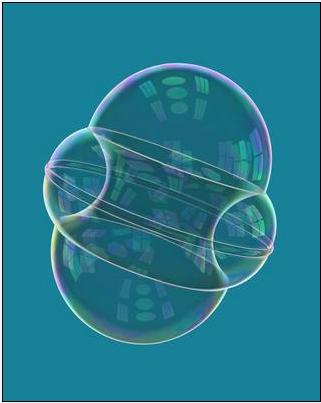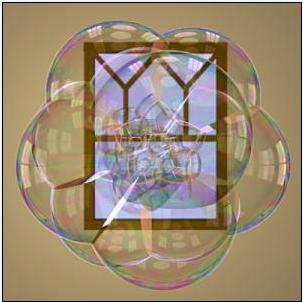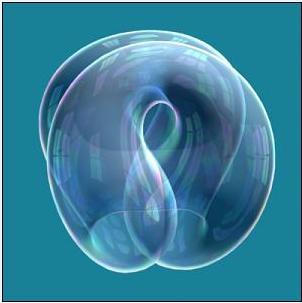John Sullivan
"Double Bubble Trouble"
Digital print, 18" x 22", 1999.

"119 Bubbles"
Digital print, 20" x 20", 1990.

"Willmore Duel"
Digital print, 20" x 20", 2004.

John Sullivan
Professor of Mathematics, Technische Universität Berlin
" My art is an outgrowth of my work as a mathematician. My research studies curves and surfaces whose shape is determined by optimization principles or minimization of energy. A classical example is a soap bubble which is round because it minimizes its area while enclosing a fixed volume. Like most research mathematicians, I find beauty in the elegant structure of mathematical proofs, and I feel that this elegance is discovered, not invented, by humans. I am fortunate that my own work also leads to visually appealing shapes, which can present a kind of beauty more accessible to the public.
Double Bubble Trouble shows a double soap bubble in an unstable
equililbrium; in the proof that the standard double bubble is in fact
best, this case, where one bubble is disconnected, was
the most troublesome to rule out.
119 Bubbles shows the stereographic
projection of the 120-cell or dodecaplex, one of the regular
4-polytopes; it has exactly the geometry of a bubble cluster,
where one of the 120 cells has become the infinite exterior.
Willmore Duel shows a Willmore surface, minimizing
its elastic bending energy; it is the dual surface to one we used
for the minimax sphere eversion in The Optiverse.
All three images were rendered with my own custom soap-film
shader for Pixar's Renderman software.
"
jms@isama.org
web page